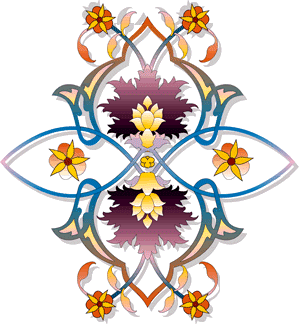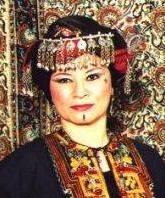|
An American Style Tribal Bellydance Troupe An Isle of Standauffish Affiliated Group As
in Renaissance Europe, both the Middle East
and the Maghreb (North African countries of
Morocco, Algeria and Tunesia) had their
share of wandering entertainers. In Tunesia,
women of the Uled Nayel left their tribe at
an early age, travelling to towns and cities
to earn dowries by dancing, sooth-saying and
story telling. The Ghawazee and Almehs of
Egypt were women who also danced and
entertained professionally
In 1995, in the desert city of Las Vegas, NV, a handful of experienced belly dancers formed a "tribal" troupe to explore and expand their knowledge of ethnic style dances. Much as a tribe of wandering entertainers might have done, they study and work with many styles of Middle Eastern and North African dance, selecting those best suited to their own tastes and needs. Their dance style is not restricted to rural line dancing, nor is it typical Egyptian cabaret style. It is more "tribal" in feel and more folkloric in look. In designing their costumes, they have taken elements from various eastern cultures. Their turbans are reflections of those worn by the European gypsies in the 1500's, of the Uled Nayel tribe of Algeria and of the Bedouin and Berber tribes of the Maghreb. They have copied Persian coats, the Indian choli, and the pantaloons found throughout the ancient Arab world. Their full skirts are reminiscent of those seen in ancient India or worn by the Spanish gypsies. Their jewellery is a collection of pieces from Afghanistan, India, Arabia, Turkey, Egypt, the Maghreb, Spain and countries bordering the Mediterranean Sea. The many bits of jewellery on their turbans are inspired by the crowns and elaborate headpieces worn by the Uled Nayel and the women of the Kabylie (the Berbers of coastal Algeria and Tunesia). The troupe name is an acronymic construct signifying women "Of like mind; of one spirit." In the passionate pursuit of belly dancing, this is their ultimate truth. They are of diverse backgrounds, yet one in the spirit of the dance. Often in the past people have mistaken them for gypsies; it is this gypsy aspect of the troupe that explains much of the variety of costumes and dances. As the gypsies migrated from India, through Asia, Europe, Spain, Syria and North Africa, they were able to choose which elements of these cultures to keep and which to ignore. This troupe has done the same. Al-Ateeka does not claim to represent any one specific tribe or ethnic group, for they have formed a "family" of their own, one that presents a warm and earthy interpretation of a very ancient art form. "We
are travellers, entertainers, "desert
gypsies."
Article by
|
|
|

Webpage © 1995-2015 Isle of Standauffish

